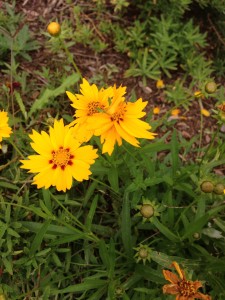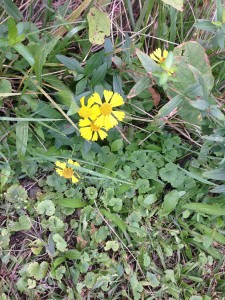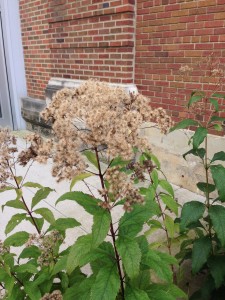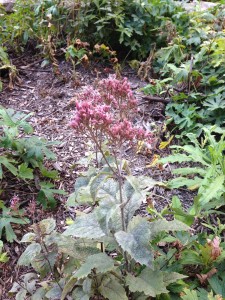- Family: Asteraceae
- Genus/species: Coreopsis lanceolata
- Common name: Lance-leaved Coreopsis
- Native to Ohio
- Identified on September 17th 2014. Lance-leaved Coreopsis was located in an enclosed flower bed on west campus on the east side of Howlett Hall. The flower bed was in an urban and cultivated setting. The soil was mainly composed of topsoil with a mixture of commercial fertilizer. The soil was also covered with a half-inch layer of wood-chips.
- Identifying characteristics include the presence of two large lobes and a central depression between the two lobes on each of the petals in the flower. In addition, the presence of bright yellow flower petals and lance-shaped leaves also contributed greatly to the identification of Coreopsis lanceolata.
- Family: Asteraceae
- Genus/species: Helenium autumnale
- Common name: Sneezeweed
- Native to Ohio
- Identified on September 17th 2014. Identified on a shallow bank of the Olentangy River west of the Drake Event Center. Helenium autumnale was found amongst many scattered weeds and grasses. The area also contained many sedimentary rocks and muddy deposits from changes in elevation of the river. The soil was rich with sediment and littered with small rocks. This plant is uniquely three-toothed at the tip of each flower petal.
- Family: Asteraceae
- Genus/species: Eupatorium maculatum
- Common name: Spotted Joe-pye Weed
- Native to Ohio
- Identified on September 17th 2014. Identified in an enclosed flower bed in the southeast corner of the Jennings courtyard. The Eupatorium maculatum is the dominant plant in the flower bed. The soil is composed of topsoil and is littered with small herbaceous weeds around two inches high. There are also small stones (1 cm long) scattered on the surface of the soil. The picture on the left depicts the plant during fruiting season, in late summer and autumn. While the picture on the right depicts the plant during flowering season, in late spring and summer. The plant’s height ranges from three feet to six feet.




I really like your photo of Coreopsis lanceolata. It looks different from the other members of Asteraceae we have seen out in the field due to the notched outer petals. The way the outer petals are arranged and colored, I wonder if they are actually flowers themselves, with biomaterial symmetry. Did you have a chance to dissect the flower to see if that is the case?
The Eupatorium maculatum plant, is that more of a corymb inflorescence type? I can’t really tell through the picture. It may also be umbel.